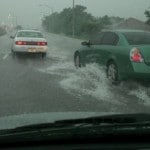Tornado Safety and Planning
As weather forecasters are predicting an active few weeks for tornado activity, the Property Casualty Insurers Association of America (PCI) encourages homeowners and renters to take appropriate steps to be prepared, which includes a review of their insurance policies and discussion of coverage options with their insurance agent or company.
“With wind speeds that can reach nearly 300 miles per hour, tornadoes can be deadly and cause severe property damage,” said Donald Griffin, vice president personal lines for PCI. “Because tornadoes can occur rapidly and with little warning, advanced preparation is very important. We encourage consumers to know the warning signals used in their community and be prepared to take cover when alerted. Maintaining an emergency storm kit with a radio, flashlight, batteries and first-aid items is the first step in preparation. Other steps include conducting tornado drills with your family and ensuring that your property is adequately insured.”
The peak of tornado season in the U.S. varies by geographic region beginning in southern states during the months of March and April. Peak tornado season for the southern plains occurs during May and June and typically takes place during June and July in the Midwest and northern plains. According to the National Oceanic and Atmospheric Administration’s National Climatic Data Center there were over 1,400 tornadoes in 2010. The highest concentrations of tornado reports were clustered in the Front Range of the Rockies, the Southeast, the Central and Northern Plains, and the Great Lakes. The largest outbreak of tornadoes for 2010 occurred on June 17th, there were at least 74 confirmed tornadoes reported across the Upper Midwest and Northern Plains.
Most tornado, windstorm, hail and similar severe weather-related losses are covered by either homeowners or renters insurance policies. Tornado losses to a home are covered by the “windstorm” peril under the homeowners insurance policy. Renters insurance also provides coverage to policyholder possessions under this peril. Protection from windstorm or hail damage for cars is covered under the “comprehensive” portion of the automobile insurance policy.
PCI pre-storm tips:
– Conduct a detailed inventory of your possessions including receipts, descriptions and photos of your home’s contents.
– Keep your insurance policy and CalCas Claims information along with other important information with you or in a secure place.
– Keep a cell phone charged and with you for emergencies.
– If you have one, keep a laptop computer close by. Most insurance companies allow claims reports to be submitted via the Internet.
If you experienced a loss from the storms:
– Immediately contact your insurance agent or company representative
– Inspect property and cars for damage
– Inventory losses and photograph damage, and save related receipts to assist with claims handling
– Secure property from further damage or theft
– Check the background and legitimacy of repair contractors. Ask your insurance company for assistance in locating a reputable contractor.
As always, we hope you never have to call to report a tornado related claim, but it pays to be prepared!

 recently received an email from a co-worker that discussed some unique tips for safe driving in rainy weather. Spring is nearly upon us, and with it comes strong storms and heavy rains. Since we can’t always avoid getting out in the rain, I wanted to share a few interesting tips with you. If you try them out, please come back and let me know what you think!
recently received an email from a co-worker that discussed some unique tips for safe driving in rainy weather. Spring is nearly upon us, and with it comes strong storms and heavy rains. Since we can’t always avoid getting out in the rain, I wanted to share a few interesting tips with you. If you try them out, please come back and let me know what you think!